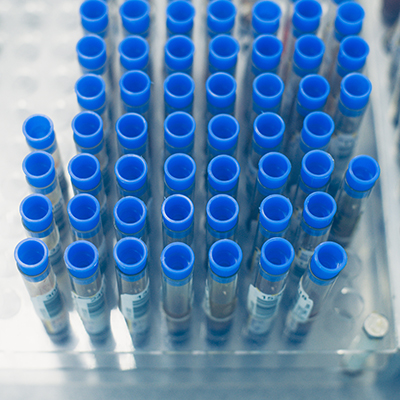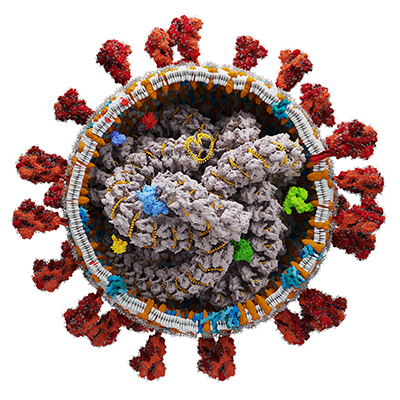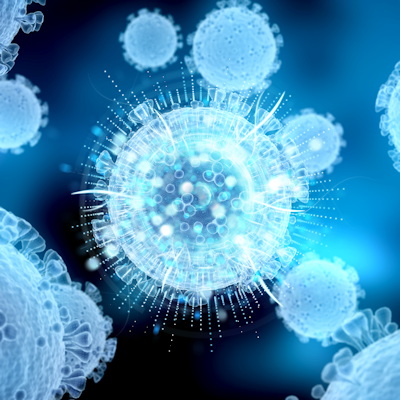November 9, 2020 -- Researchers have unearthed how SARS-CoV-2 employs genomic "origami" to infect and replicate inside host cells, a discovery that may hold the key to developing novel antiviral drugs that target specific areas of the virus's genomic structure. The findings were published on November 5 in Molecular Cell.
Coronaviruses, the family of viruses that includes the SARS-CoV-2 virus, have evolved the largest known single-stranded RNA genome in nature. Scientists have postulated that long-distance interactions in the viral genome, including coronaviruses, may be key regulators of viral replication (discontinuous transcription) and protein production (genomic regulation).
"We show that interactions occur between sections of the SARS-CoV-2 RNA that are very long distances apart, and we can monitor these interactions as they occur during early SARS-CoV-2 replication," said co-author Lyudmila Shalamova, PhD, of Justus-Liebig University, Germany, in a statement.
Currently, the majority of COVID-19 treatments target viral proteins and not the viral genomic structure, which is the essence of what makes the virus effective at being a virus. Understanding how the various structural elements along the coronaviruses' genomic RNA (gRNA) and subgenomic mRNA (sgmRNA) fold and interact will lend insight into which parts of the structure would be good candidates for drug targeting.
However, researchers have yet to fully map the long-range RNA-RNA "interactome" -- or the whole set of molecular interactions -- in coronaviruses.
"Until recently we didn't have the right tools to map these interactions in full," said lead author Omer Ziv, PhD, of the University of Cambridge's Wellcome Trust/Cancer Research U.K. Gurdon Institute. "Now that we understand this network of connectivity, we can start designing ways to target it effectively with therapeutics."
The breakthrough came about thanks to a model of RNA conformation that Ziv and colleagues had developed in earlier work. The model, called Crosslinking of Matched RNAs and Deep Sequencing (COMRADES), combines psoralen crosslinking of base paired RNA with high-throughput sequencing to retrieve the positions of the paired nucleotides. COMRADES is able to measure the structural diversity of alternative RNA conformations that coexist inside cells, short- and long-distance base pairing within the same RNA molecule, and base pairing between different RNA molecules, such as those of host and viral origin.
In the current study, the researchers applied COMRADES to study the structural diversity of the SARS-CoV-2 gRNA and sgmRNA inside cells and uncover networks of short- and long-range RNA-RNA interactions spanning the entirety of SARS-CoV-2 gRNA and sgmRNA as well as site-specific interactions with the host transcriptome.
The team found that there are site-specific interactions between the SARS-CoV-2 RNA and various cellular RNAs, especially small nuclear RNAs (snRNAs). For instance, cellular snRNA interacts with viral open reading frame 1a (ORF1a) and ORF1b. These interactions are conserved in coronaviruses, as MERS-CoV shows the same interactions with snRNA.
In terms of long-range interactions, ribonuclease (RNase) mitochondrial RNA processing (MRP) RNA was found to base pair with an extended 3′ region of the sgmRNA, but not the gRNA, of SARS-CoV-2. RNase MRP RNA has a role in human preribosomal RNA processing.
The researchers noted that host-virus RNA-RNA interactions are an attractive target for developing new antiviral therapies, since developing resistance to this approach would require the virus to acquire considerable mutational changes to become independent of the host RNA. The approach also opens new opportunities to control emerging RNA viruses, according to the authors.
To make their data more accessible to the community, the researchers developed an interactive user-friendly web interface to COMRADES for exploring and visualizing the SARS-CoV-2 RNA-RNA interactome. The software, which runs in the R statistical computing environment, can be downloaded from the GitHub code-hosting platform.
The researchers hope that the combination of the COMRADES software and the new knowledge of how the SARS-CoV-2 genomic elements interact will lead to previously undiscovered transcription factors and contribute to developing RNA-based antiviral drugs against the SARS-CoV-2 virus.
Do you have a unique perspective on your research related to genomics or drug discovery? Contact the editor today to learn more.
Copyright © 2020 scienceboard.net










